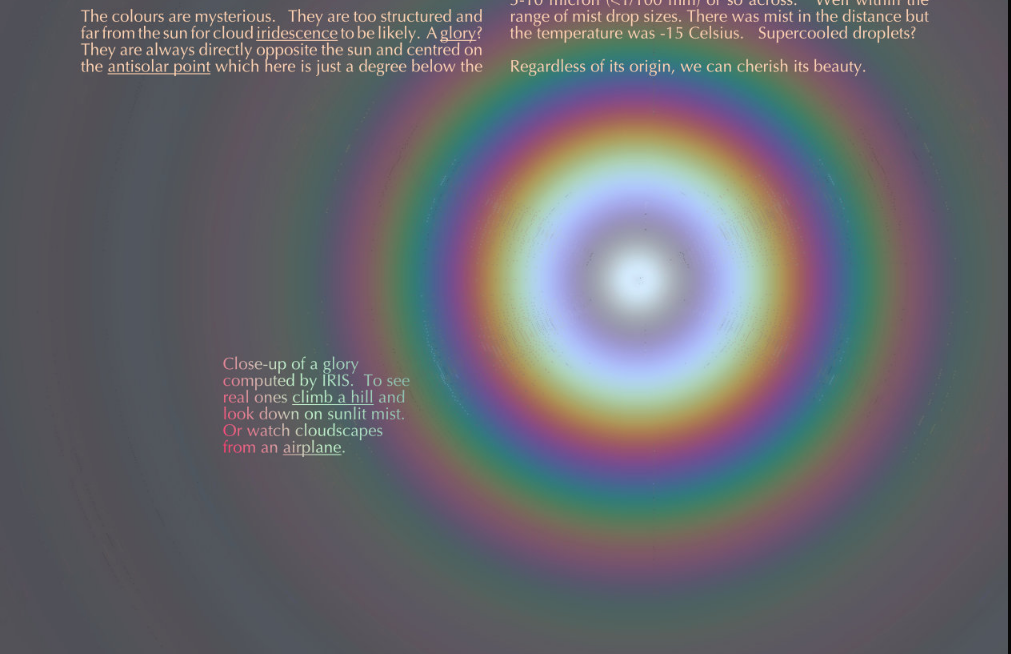Christmas sky colours, Sweden
Christmas Sky Colours in Sweden: A Captivating Atmospheric Phenomenon
During the winter months in Sweden, the sky often unveils breathtaking displays of color that add a touch of magic to the holiday season. One such captivating spectacle was captured by photographer Göran Strand in the mountainous region of Jämtland. In this mesmerizing scene, the sky is adorned with mysterious hues, creating an ethereal atmosphere that leaves viewers in awe. In this article, we will delve deeper into this phenomenon, exploring the possible explanations for these enchanting Christmas sky colors.
The colors observed in the sky are intriguing and distinct, prompting us to explore their origin. While cloud iridescence, which occurs when sunlight interacts with tiny water droplets or ice crystals in clouds, is a common explanation for such phenomena, it seems unlikely in this case. The structured nature and distance from the sun suggest an alternative explanation. One possibility is the presence of a glory, a phenomenon that manifests as a set of concentric rings centered on the antisolar point, which is directly opposite the sun.
In the case of Göran Strand's photograph, the antisolar point lies just below the horizon, with a glimpse of its bright center peering above. This observation, combined with measurements and simulations using IRIS (a software tool for simulating atmospheric optical phenomena), indicates that the colors were likely produced by water droplets measuring approximately 5-10 microns in diameter. These droplets fall within the range of mist drop sizes. Despite the presence of mist in the distance, it is remarkable that these tiny water droplets could generate such a captivating display of colors. Moreover, the temperature at the time was a frigid -15 degrees Celsius, suggesting the possibility of supercooled droplets.
Regardless of their exact origin, the beauty of this atmospheric phenomenon is undeniable. The Christmas sky colors in Sweden offer a glimpse into the wonders of nature and remind us of the enchantment that surrounds us during the holiday season. To witness similar glories firsthand, one can climb a hill and observe sunlit mist from above or marvel at the ever-changing cloudscapes from an airplane.
As we continue to explore the mysteries of the atmosphere, phenomena like the Christmas sky colors in Sweden remind us of the vastness and complexity of our natural world. Each unique occurrence serves as a reminder of the intricate interplay between light, water droplets, and atmospheric conditions. While we may uncover scientific explanations for these phenomena, there is a certain magic in surrendering to the beauty and wonder they inspire.
In conclusion, the captivating Christmas sky colors captured by Göran Strand in Sweden provide a mesmerizing glimpse into the enchanting world of atmospheric optics. While the exact cause of these colors may remain elusive, the beauty they bring to our winter skies is undeniable. As we celebrate the holiday season, let us marvel at the wonders of nature and embrace the sense of awe and wonder that such phenomena evoke.

An unusual and beautiful scene pictured by Göran Strand in the mountain area of Jämtland, Sweden. It was a short December afternoon and at that high latitude the sun was already less than a degree high. Göran's camera pointed directly opposite.
The colours are mysterious. They are too structured and far from the sun for cloud iridescence to be likely. A glory? They are always directly opposite the sun and centred on
the antisolar point which here is just a degree below the horizon. We see perhaps a part of its bright centre peeping up and surrounded by a section of the first ring.
In that case, measurements of the image combined with an IRIS simulation tell us it was made by water droplets about 5-10 micron (<1/100 mm) or so across. Well within the range of mist drop sizes. There was mist in the distance but the temperature was -15 Celsius. Supercooled droplets? Regardless of its origin, we can cherish its beauty.

Close-up of a glory computed by IRIS. To see real ones climb a hill and look down on sunlit mist. Or watch cloudscapes from an airplane.
Note: this article has been automatically converted from the old site and may not appear as intended. You can find the original article here.
Reference Atmospheric Optics
If you use any of the definitions, information, or data presented on Atmospheric Optics, please copy the link or reference below to properly credit us as the reference source. Thank you!
-
<a href="https://atoptics.co.uk/blog/christmas-sky-colours-sweden/">Christmas sky colours, Sweden</a>
-
"Christmas sky colours, Sweden". Atmospheric Optics. Accessed on November 26, 2024. https://atoptics.co.uk/blog/christmas-sky-colours-sweden/.
-
"Christmas sky colours, Sweden". Atmospheric Optics, https://atoptics.co.uk/blog/christmas-sky-colours-sweden/. Accessed 26 November, 2024
-
Christmas sky colours, Sweden. Atmospheric Optics. Retrieved from https://atoptics.co.uk/blog/christmas-sky-colours-sweden/.